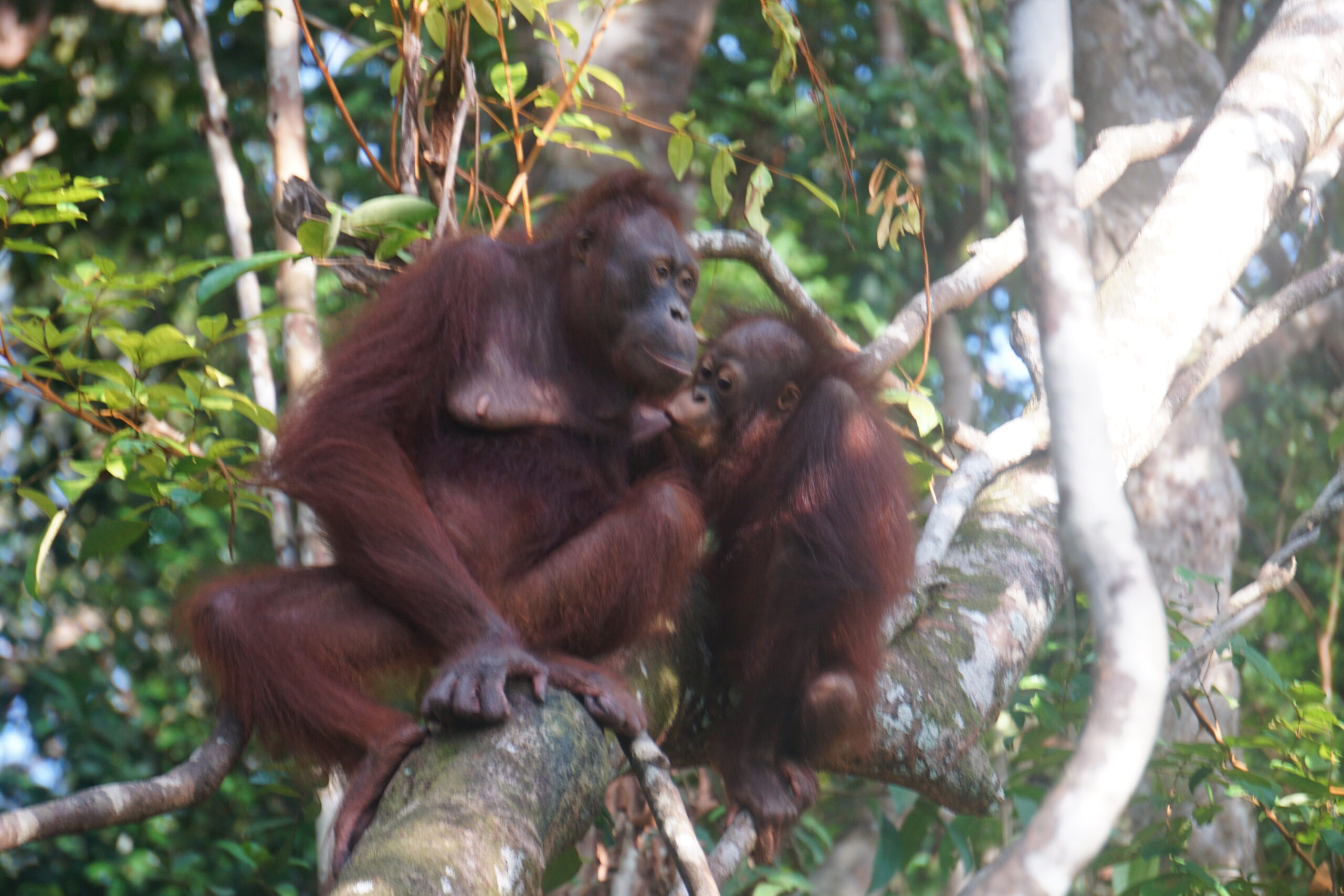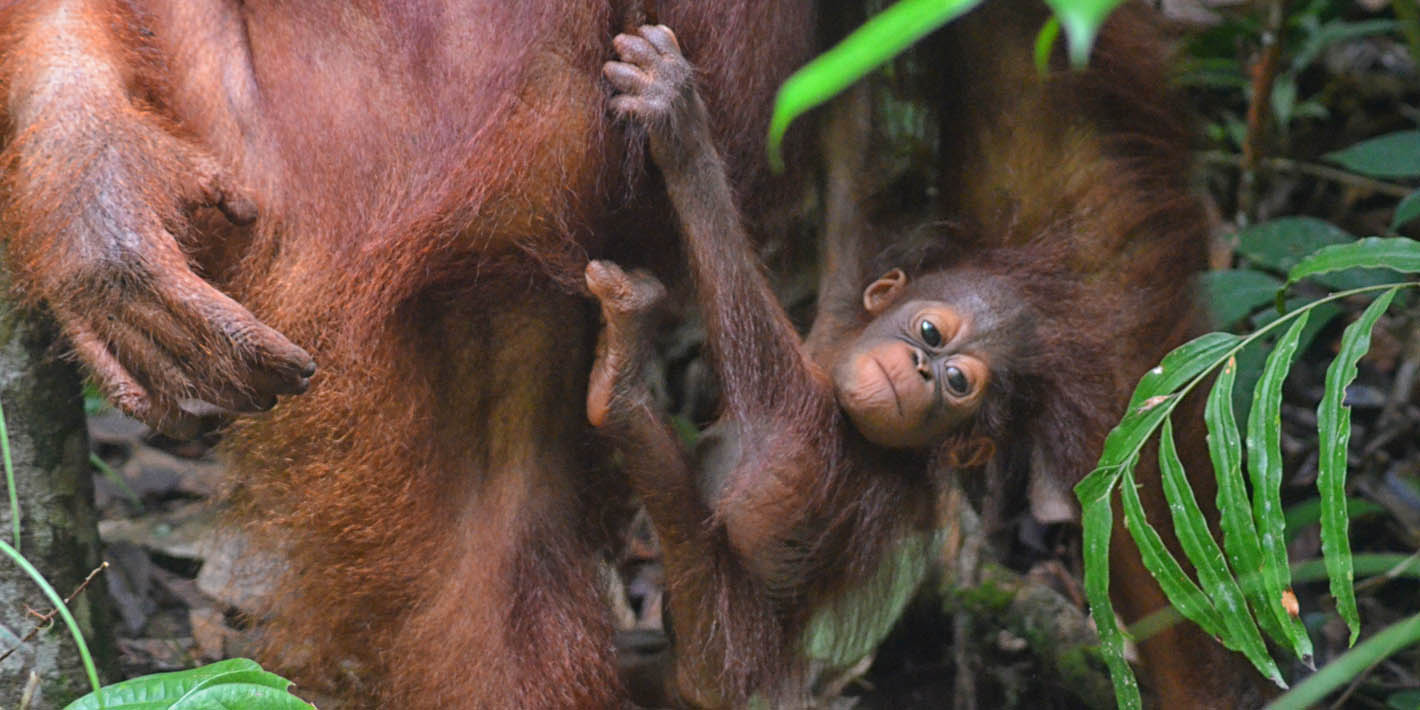
BANIR
On November 19, 2024, Banir, along with her mother Benazir, underwent an electric wire familiarization session—a crucial step before entering the forest school. This procedure ensures that orangutans understand the boundaries of the forest school area, which is surrounded by electric wires, helping them stay safe within the designated zone.
For Benazir, who had previously attended forest school in Tembak, this experience was nothing new. However, for Banir, it was her first encounter, sparking immense curiosity. When the tunnel door was opened by the animal keeper, Banir eagerly tried to approach the electric wire.
Benazir, aware of the mild shocks the wire could deliver, attempted to protect her child. She blocked Banir’s path and even pulled her back. However, Banir’s curiosity overpowered her mother’s warnings. She approached the electric wire, touched it, and immediately recoiled in shock, running back to Benazir for comfort.
Despite experiencing the mild shock, Banir’s curiosity remained. She attempted to touch the wire again, receiving another shock, and once again sought refuge with her mother. This time, Benazir positioned herself to block the tunnel door, ensuring Banir wouldn’t approach the wire again.
This session highlighted the importance of electric wire familiarization for orangutans entering forest school. At the Sintang Orangutan Center, the forest school enclosure spans 2 hectares, enclosed by electric wires that are safe and only deliver mild shocks as reminders to stay within the secure area.
The day after the familiarization session, Banir and Benazir began their forest school experience. At exactly 9:00 AM, the tunnel door connecting their cage to the forest school was opened by the animal keeper.
Benazir, who hadn’t been in forest school for a long time, appeared eager as she stepped into the forest. However, she quickly noticed that Banir remained in the cage, hesitant and afraid to venture out. Patiently, Benazir returned to the cage, staying with Banir until she gathered the courage to step outside.
Once Banir finally stepping in, they moved toward a tree near the enclosure. A special moment unfolded as Benazir patiently taught Banir how to climb. She demonstrated first, then encouraged Banir to imitate her. To ensure her child’s safety, Benazir stayed close, supporting Banir’s back as she climbed and occasionally stroking or patting her gently to calm her when Banir cried out in nervousness.
Banir seemed reluctant to explore further, focusing on a single tree. Under Benazir’s watchful eye, Banir began learning to eat young leaves, leaf shoots, bark, and other forest foods. They spent the day in the lower canopy, exploring only a few nearby trees. When tired, they rested on a branch in the middle canopy, with Benazir cradling Banir until she fell asleep.
On the second day, Banir started to show more confidence, venturing higher into the tree canopy. Though still hesitant to explore far, her growing bravery was evident. Benazir remained by her side, ensuring her safety and continuing to teach vital forest survival skills.
Banir’s mischievous behavior in the cage, such as challenging animal keepers, seemed to vanish in the forest school. The new environment brought out her fear, a natural part of the adaptation process. With Benazir’s guidance, Banir gradually began to understand the forest as her new home, marking the first steps toward her journey of independence.

